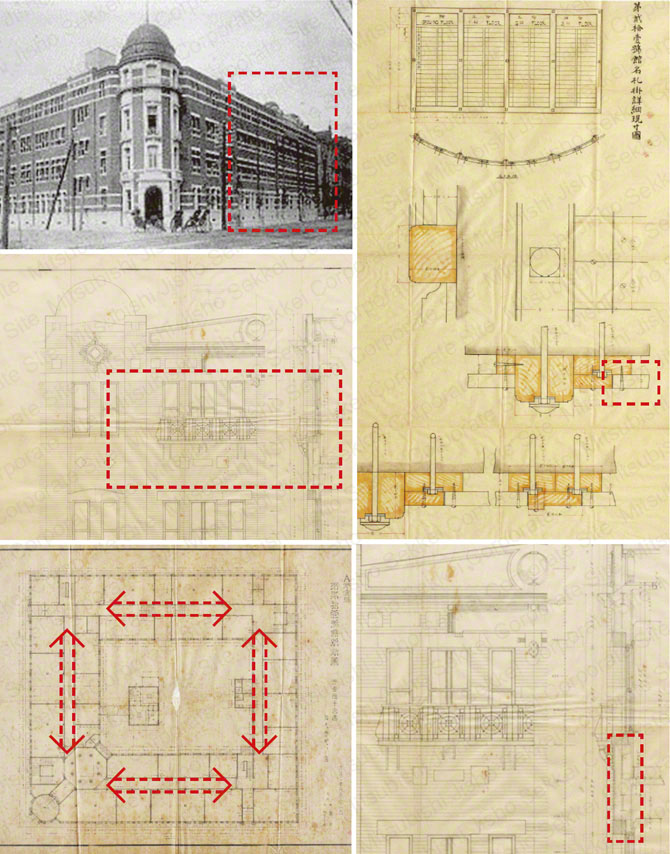LIBRARY
Serialization | Journey to old drawing
3. Building No. 21 (1914–1961) [From row house style to the forerunner of large office architecture]
Tomoyoshi Ejima
Building No. 21 stood on the site of the current Shin-Tokyo Building. At about 1/4 of the size, it was designed by Katsuya Yasuoka. The office architecture of the brick era, when the Marunouchi district was known as “Iccho London”, reached its final form with Building No. 13. From Building No. 14 onward, the main structural material was reinforced concrete. But even though the material changed the basic nagaya row house plan was inherited. The tenants in Building No. 21 shared the entrance hall (see the “Octagonal entrance hall” in the plan below), stairs, and restrooms, and the floor plan was like the large open rooms of current tenant offices. On the facade, as if in response to the continuous office space in the interior, horizontally spaced windows give way to large, continuous openings. However, the detail drawings specify a brick finish, evidence of a desire to harmonize with the “Iccho London” atmosphere of the district. The opening of the building was covered in issue 331 of Kenchiku Zasshi, which reported that “Lighting and care of the corridors, water bills, cleaning of the restrooms and elevator expenses are borne by the tenant ”. The building was a forerunner of today’s large office buildings not only in its layout but also in its philosophy of building management.

Middle left: New facade foreshadows modern horizontally continuous windows
Lower left: Octagonal entrance hall is at lower left
Upper right: Removable tenant name plates, anticipating changes of tenants (predecessor of today’s tenant directory signs)
Lower right: Brick finish over reinforced concrete base
Copyright and other rights to all content on the this website (including text, data, and images) belong to our company or to right holders who have authorized use by our company. Unauthorized reproduction, modification, retransmission, or republication of content on this site is prohibited unless permitted by law.
